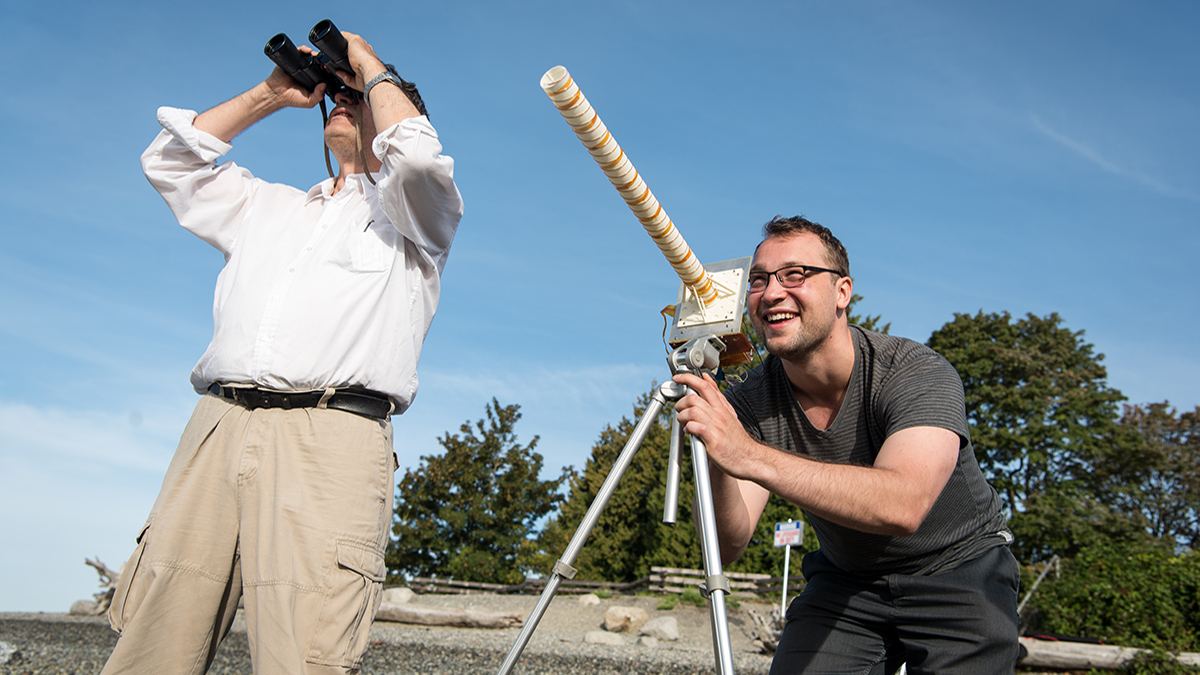
The sole remaining Canadian team competing for the 20-million dollar Google Lunar XPRIZE has been eliminated. The Canadian team—Team Plan B, which worked out of the BCIT Applied Research facility—was one of 16 shortlisted teams vying for the prize.
The decade-long contest, now in its final months, challenges privately funded teams to build and launch a robotic spacecraft, successfully land it on the Moon, and have the spacecraft travel 500 metres while transmitting high-def video and images back to Earth.
Team Plan B is near and dear to our hearts, not only because it’s Canadian, but because it includes BCIT graduates. Manager and spokesman Sergei Dobrianski studied Computer Systems Technology at BCIT in 2011 and 2012. His brother, Andrei Dobrianski, earned an Electrical and Computer Engineering diploma in 2006.
We asked Sergei a few questions about the team’s Google Lunar XPRIZE experience:
Why did you do this? Why compete for the Google Lunar XPRIZE?
The Moon is humanity’s next step into the solar system. Exploration brings risk; however, it also lays the foundation for a new industry. Asking, ‘Why the Google Lunar XPRIZE, why the Moon?’ is like asking people decades and centuries ago, ‘Why cross the oceans, seas, rivers, and streams?’.
What did you learn about the business of space exploration?
It’s not for everyone. There is no safety net for innovation and certainly not for emerging private space companies here in Canada. I’m confident this will change in decades to come once more case studies appear and commercial companies across the globe experience success. But as a new space company starting from ground zero, we’re looking to succeed in a market that doesn’t exist yet. It’s a challenge. Generally, if a proposed product by a private company is more than 15% novel and a revenue stream is an experiment, the company is unlikely to receive the requested investment for R&D.
Why was Team Plan B eliminated?
I personally wouldn’t say we are eliminated; I’d call it more of a change in plans. We’ll simply launch in a different year and not in accordance with the 2017 deadline for the competition. We are going to beat the other teams to a landing. But to answer your question: funding and support. Finding a channel for a launch vehicle is not hard; one of many approaches investigated and available was a launch on an ICBM [intercontinental ballistic missile] which was repurposed for commercial use in the ’90s. Similarly, BCIT Applied Research provided us with a space to work in, with access to the equipment we needed to achieve various technical steps. But funding is another matter. We are to be held accountable, however, it has been very difficult to secure support or funding within Canada—specifically in BC—for an unprecedented attempt. Our company was and is frequently reminded, here in BC, to present a use case for a similar, successful project. There just aren’t any. [The competition’s senior director, Chanda Gonzales-Mowrer, has said that funding is a significant challenge for most teams. The cost of a mission easily outstrips the top prize.]
What’s next for Team Plan B?
What we’ve developed so far has become the foundation for what we want to eventually achieve. In other words, we’re still aiming for the Moon.
We’ve many discoveries since our start in 2010 that have led us to refocus. Instead of securing investment—which could prove more difficult than achieving a lunar landing—we’ve chosen to focus on reducing the cost of the most expensive technologies necessary for satellites to operate in Earth’s orbit and technologies that would significantly reduce the cost of a lunar mission. For example, one development that led to an offer from a space agency was a technology involved in the miniaturization of a pulsar antenna. Signals from pulsars can be used for navigation on Earth, in orbits/space, and on other planets.
Learn more about Team Plan B and their Google XPRIZE attempt.
